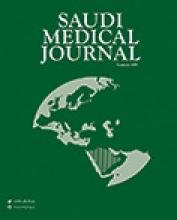Abstract
OBJECTIVE: To define the clinical, radiographic, and bronchoscopic features, and to describe the occupations of the largest group of patients with anthracosis.
METHODS: All patients who underwent flexible bronchoscopy at 2 Iranian hospitals (Imam Hospital [Tehran], and Tohid Hospital [Sanandaj]), Iran, between April 1982 and June 2006 were considered for inclusion in the study. The demographic data, clinical, and radiographic findings of anthracotic and anthracofibrotic patients were recorded.
RESULTS: Of the 14300 patients, 487 cases of simple anthracosis, and 291 of anthracofibrosis were found. A total of 98.4% female patients were housewives, and 86.4% lived in rural areas. Of the male patients, 40.6% were farmers, 29.6% were manual workers, and 7.5% were miners. Of these, 96% of patients had abnormal chest radiography. On bronchoscopic examination, bilateral bronchial involvement was found in 62.5% of the patients. The condition was confined to the trachea in 0.38% of patients, the bronchi involved were the main bronchus in 37%, the lobar bronchi in 83.2%, and segmental bronchi in 35%. Bronchial narrowing and obstruction was observed in 37.4% of the patients.
CONCLUSION: Anthracosis and anthracofibrosis are neglected conditions that are a common finding on routine bronchoscopic examination. Given the demographic findings, and a review of other reports from developing countries, exposure to combustion of biomass fuel in rural areas is a possible risk factor.
- Copyright: © Saudi Medical Journal
This is an open-access article distributed under the terms of the Creative Commons Attribution-Noncommercial-Share Alike 3.0 Unported, which permits unrestricted use, distribution, and reproduction in any medium, provided the original work is properly cited.






